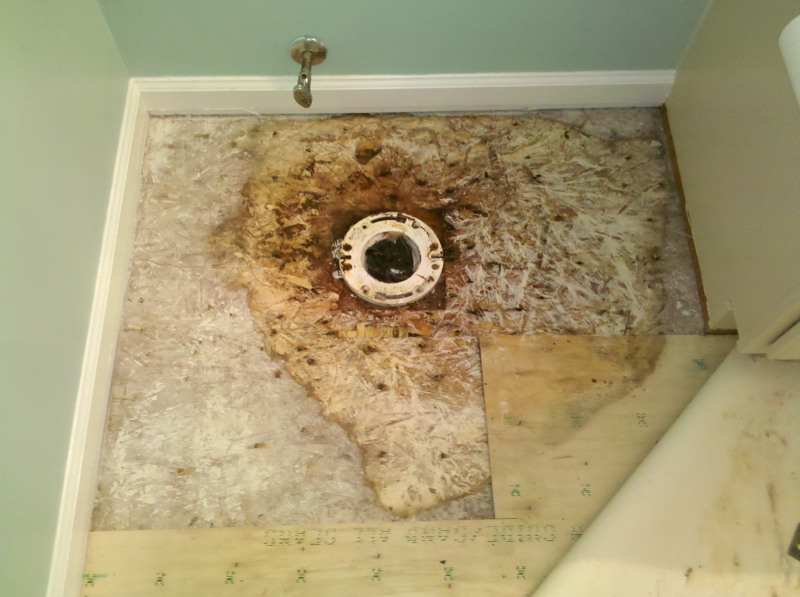Have you been on the lookout for selective information on Looking for Signs of Water Damage in the Bathroom?

The shower room is incredibly susceptible for moist accumulation and possible water damages as a result of the regular use of water in it. This article supplies simple inspection strategies to aid identifying water damages threats.
The constant use water in the washroom makes it very prone for damp build-up and potential water damage. By inspecting it regularly, you can reduce water relevant problems.
The adhering to collection of assessments is easy to perform and also must be done when in every three months in order to keep your shower room healthy as well as to prevent potential water problems triggered by the tub, the shower, pipe joints and plumbing, sinks, closets, as well as the bathroom
Do not neglect executing these examinations as well as be extensive while performing them. Remember that these basic assessments can save you a great deal of cash by offering very early indicators for water damage
Bath tub as well as Shower
The shower and bath tub need special focus as well as maintenance. Examine the ceramic tiles and change if broken. Make sure that there is no missing grout in between the tiles. Evaluate as well as replace fractured caulking at joints where the walls fulfill the flooring or the bathtub. Clogged drains pipes and also pipes troubles will certainly avoid the bathtub from drying out as well as may show major problems under the tub. Consult with a specialist right away to prevent architectural damage. Pay attention to stainings or soft areas around the bath tub walls as they may suggest an internal leakage.
Plumbing
Signs for water damage are tough to discover since a lot of pipes are mounted inside the walls.
Pay unique attention to floor covering and wall surfaces wetness and also spots as they might suggest an invisible plumbing issue. Check wetness degrees in adjoining areas as well.
Sinks as well as Cabinets
Sinks and cupboards are exposed to wetness and humidity day-to-day as well as are usually neglected. Evaluate frequently under the sink and also on the countertop above it. Fix any drip in the trap as it might recommend drain troubles. Look around the sink, sluggish draining pipelines may suggest an obstructed drain. Replace sink seals if they are fractured or loose.
The Bathroom
The commode is an at risk water junction. Inspect the water lines as well as look for leakages around the toilet seat, in the hose pipe, as well as under the water container. If you identify any indications of wetness on the floor around the commode, look for leakages in the toilet edge and also tank seals.
Be aware that hanging toilet bowl deodorants increases the chances for clogs.
Water Damage Signs In The Bathroom To Avoid Cleanup
Musty smell
This is one of the easiest signs to catch because musty smells are so odorous. The damp, earthy, moldy smell should be a big red flag. The smell will develop when moisture gets trapped in surfaces, and begins to facilitate mold growth. Leaking pipes under cabinets, inside walls, and behind shower fixtures will cause moisture to stay trapped and not dry, which will lead to mold growth and spread. As soon as you notice any musty smells in your bathroom, have it checked for hidden water damage and cleanup signs.
Visible mold
If the smell isn’t there to give it away, sometimes you will actually see mold growth. Finding mold in your bathroom is a serious problem, because mold is very harmful to your health. By the time mold growth is visible, it also means that water damage has already occurred and been present for some time. The only way the mold problem can be resolved is to find the source of the moisture and get it stopped. To safely and adequately remove mold, you need to have professionals handle the remediation. Do not waste any time in getting mold problems addressed, fixed, and sanitized so that you can protect you and your family from the many respiratory symptoms caused by mold exposure.
Damaged floors
Bathroom floors should be able to withstand some exposure to water while still remaining in good condition. However, when excess exposure or water leaks occur, they will begin to damage even the most water-resistant flooring. If you notice any cracking, bubbling, staining, or warping on your bathroom floors, there is probably a water leak somewhere causing the distortion. If you notice areas of the floor have become softer, or even have a spongy feeling, there is probably damage to the subfloor. Subflooring is typically made up of plywood. When plywood is exposed to water or moisture, it will absorb it. Once it has become saturated, the weight of the excess water will cause the wood to swell and soften. Check the floors in your bathroom frequently to catch any of these sings before they lead to damaged subflooring.
Changes on walls
When water leaks behind walls, it will cause changes in the drywall. Peeling plaster, blistering paint, and soggy wallpaper are all good indicators that excess water is building up behind the wall. Water leaking behind drywall will cause it to swell and be soft to the tough. If you start to notice gaps along the trim of your walls, or where tile meets the wall, it could also be a strong indicator that there is a leak behind the wall. Any changes, distortion, or damage on the walls should be evaluated as soon as you notice it to prevent further water damage and cleanup.

I stumbled upon that entry on How to Fix a Water Damage Bathroom when browsing on the internet. Please set aside a second to share this entry if you liked it. Thank you for your time spent reading it.
Get Your Estimate Now
Comments on “Avoiding Water Damage in the Bathroom”